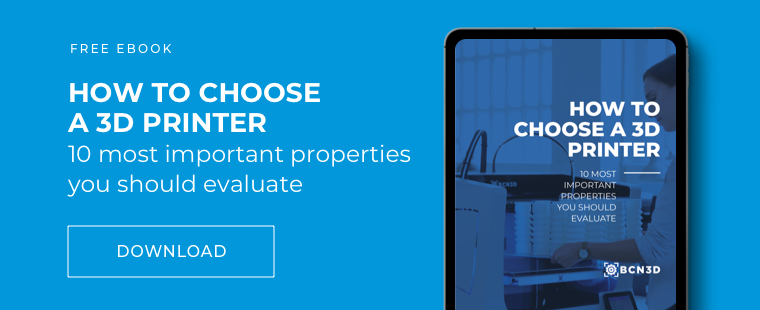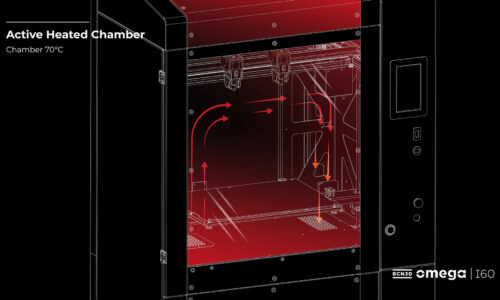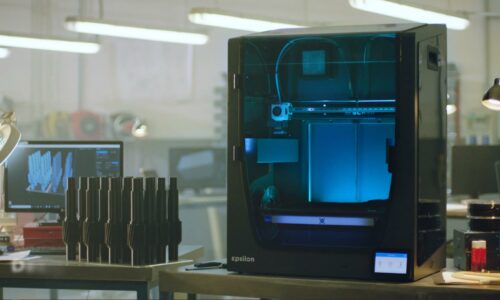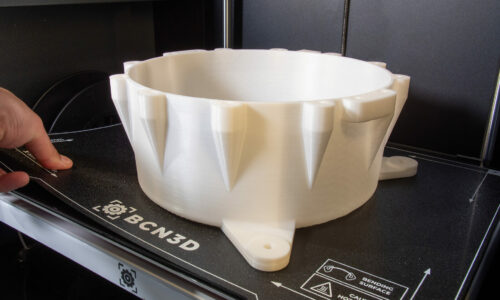5 Questions to Ask Before Choosing a Professional 3D Printer
Trying to decide on a 3D printer for professional use is not an easy task.
Whether your company is diving into the world of 3D printing for the first time, or you’re looking to up your roster, deciding on how to choose the right 3D printer is never a quick task. Especially when it comes to professional users, since there are certain applications that professional users must take into account that do not apply for beginners or hobbyists.
Luckily, there are certain questions that you can ask yourself and your team that will help guide you to make the right decision.
1. What Do You Want to Make?
This should be your very first question when determining the right 3D printer for you.
Ask yourself why your team or department needs the 3D printer and what types of objects you will be printing. It’s important to start here because this will be the foundation for many of your other deciding factors.
Will your prints be fairly basic, with minimum adjustments and low pre or post-processing? Or will you be printing complex objects or using more technical filaments? Knowing the answers to these questions will help you determine if you need a heavy-duty printer or a simpler one.
2. How Big Will Your Prints Be?
Remember that bigger doesn’t always mean better!
In general, how big or small will your prints be? This question will help you determine an appropriate budget for the 3D printer. Compare the different build plates on the printers and determine what sizes will be best for your projects.
For example, architects or engineers looking to build large scale models or industrial parts may need a larger printer. On the opposite hand, a researcher or student doing lab work will likely function fine using a desktop 3D printer.
Do not choose a larger printer “just in case” if your printing jobs can be done in a smaller printer. Typically larger printers tend to be more expensive and elaborate, as they are capable of producing industrial parts and can better handle difficult materials.
3. What Kind of Materials Will You Use?
Some 3D printers are better suited for printing some materials, depending on their parts and functionalities.
If your print jobs require you to use abrasive materials, like PP GF30 or PAHT CF15, you will need a 3D printer that has a direct extrusion system or a hotend that can handle these types of filaments.
If you are dead-set on a printer, but it does not natively have the necessary part that allows it to handle a specific material, check to see if their manufacturer sells or offers the part as an add-on. This is especially important if your print needs are particularly unique.
4. Will You Need Support?
There is no shortage of 3D printers on the market, but when choosing a printer it’s important to consider if you will benefit from going with a company that offers support.
In this context, support can mean many different things. Most professional users will benefit from assistance like additional add-on parts, online support via forums or direct communication, software, or upgrades.
If you choose a printer solely based on a lower price, but it isn’t backed by a company that can aid you when needed, you may run into some issues that are not easily solvable in the long run. Choosing a 3D printer from a reputable company gives you access to support as they are invested in making sure you succeed with your prints.
5. What Kind of Special Requirements Must Your Printer Have?
Just as no print job is the same, no 3D printer is created equal. However, most printers can be adapted to your specific needs. Will your printer need any extras to properly print your designs, and if so what kind?
For example, maybe a dual extruder will be essential for your company’s use because you need to print multiple batches at once. Or maybe, your prints require a magnetic plate or cover on the printer.
Also consider your specific workflow. Likely your team will benefit from choosing a 3D printer that has a good user experience, like wireless printing or a touch screen.
These factors can be easy to overlook but will have an impact on your team’s workflow. Consider what will be important to both your team and the designs you’re printing. Knowing this will help you to choose a 3D printer that already has these desired extra features or that can be easily added on via a special part or tool.
Using these 5 questions you are now one step closer to landing on the right printer for your department. To go even deeper, we’ve developed a whitepaper that can further guide you in your decision.





